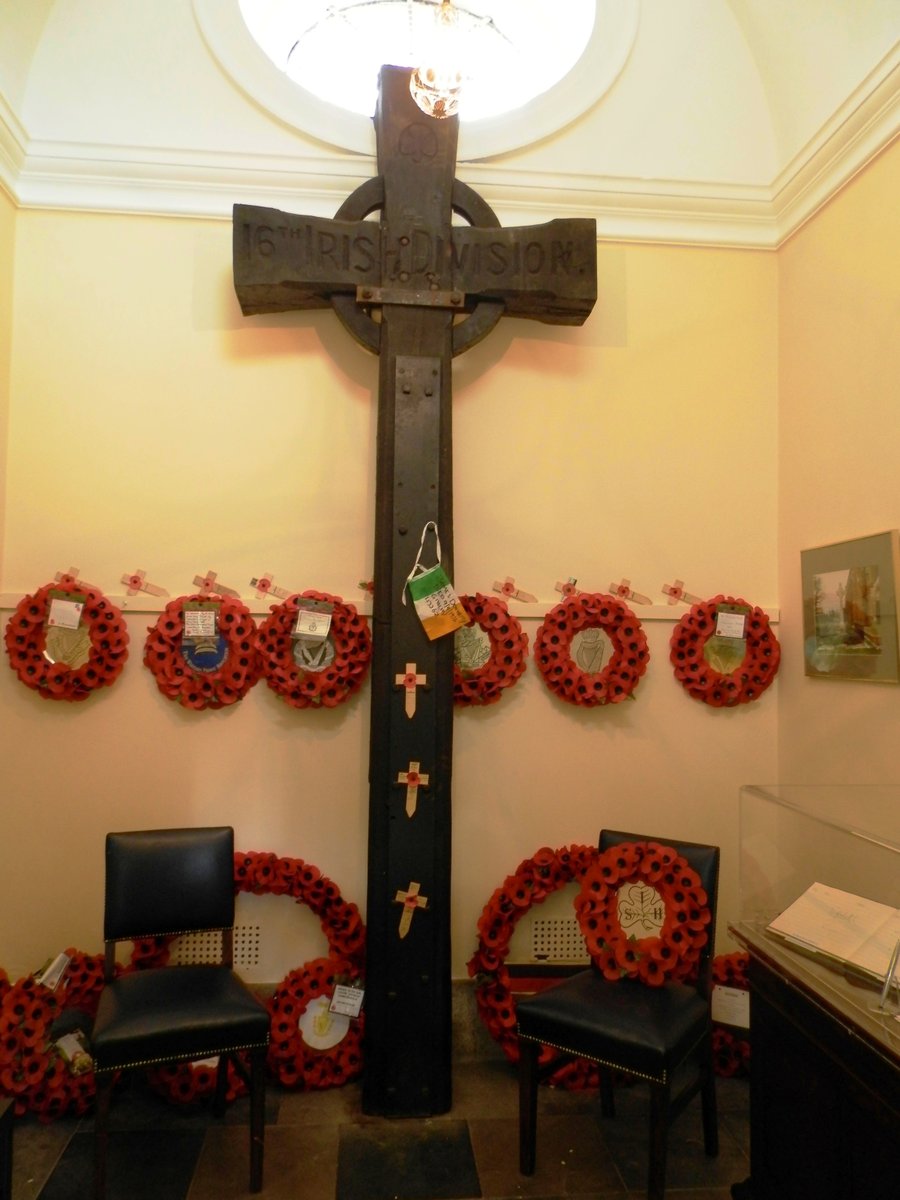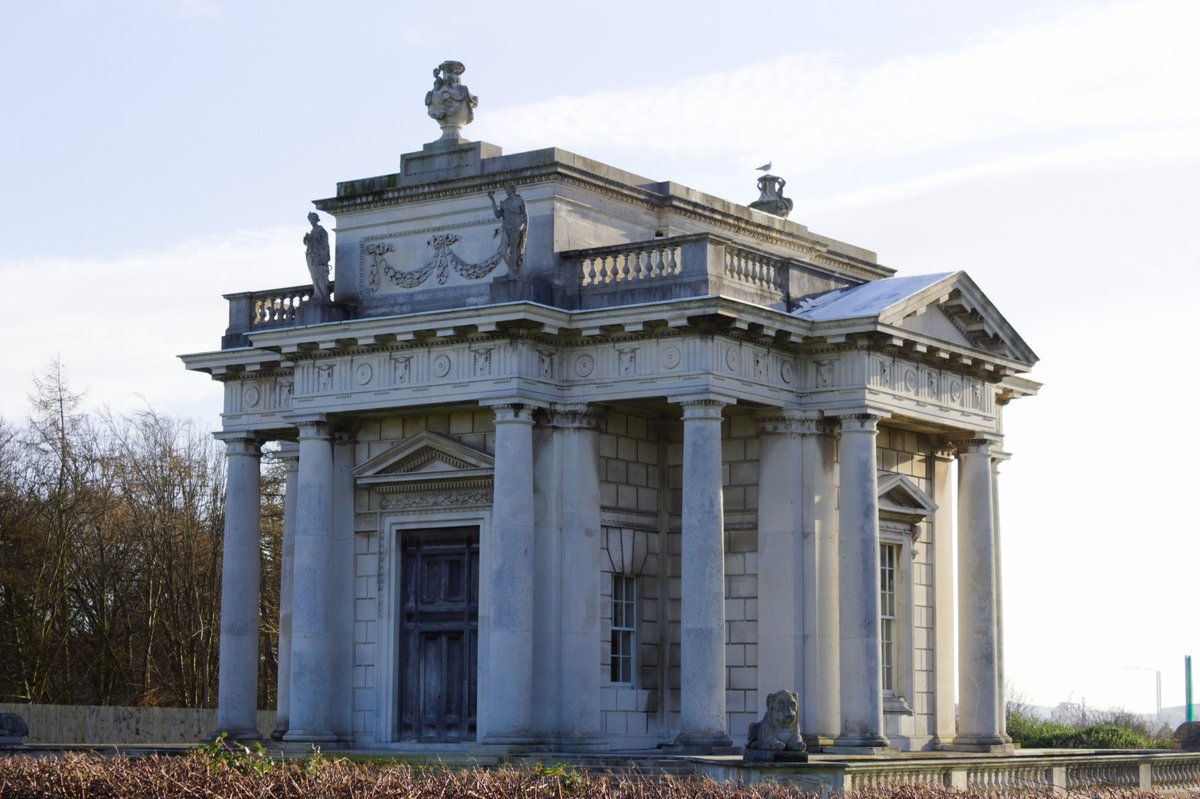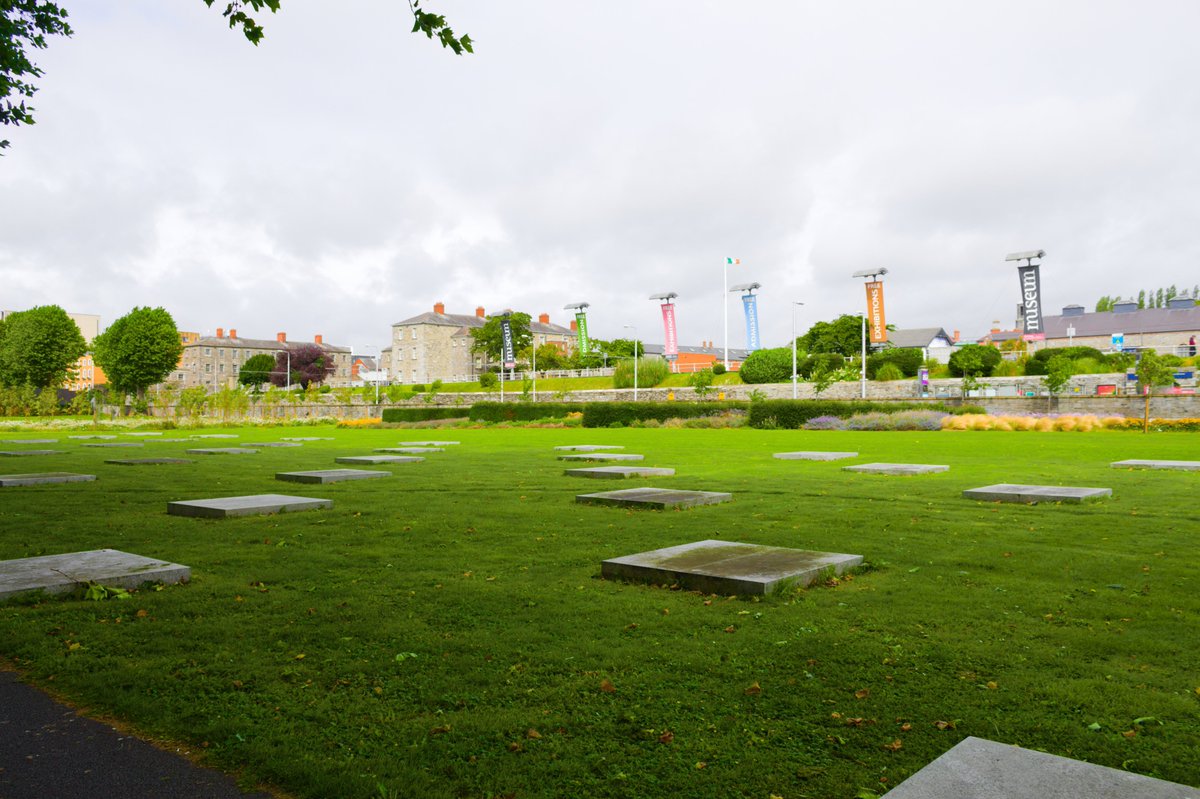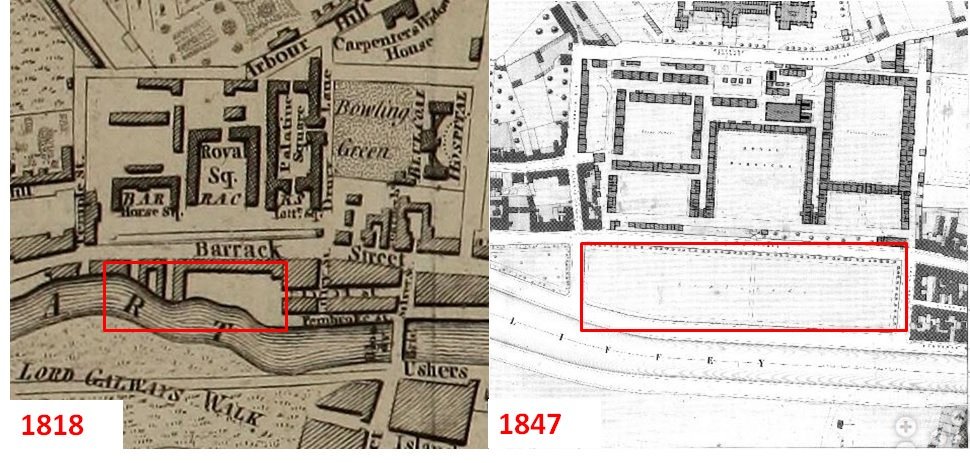
The Irish National War Memorial Gardens, Islandbridge - Dedicated to the memory of the 49,400 Irish soldiers who gave their lives during WW1. It was designed by Sir Edwin Lutyens, who loved symbolism! 16 Lime trees line the pathway representing Generals & the 16th Irish (1/7) 



Division. Beside these, planted in formation, are Cherry trees to represent soldiers. When in bloom (which will be in a few weeks’ time) they scatter petals across the lawn representing fallen men & the blood they spilled. Fountains on either side of the war stone represent (2/7) 

candles with water as melting wax. The War Stone resembles an alter/tomb, inscribed with ‘Their Name Liveth For Evermore’ - a biblical phrase chosen by Rudyard Kipling. The stone cross was bombed twice by the IRA in 1956 & 58. Either side of the central lawn are sunken rose (3/7) 



gardens. These have central lily ponds as focal points encircled by yew hedges. Besides the symbolism of death & resurrection (the altar, candles, cross), Lutyens created a tranquil memorial garden devoid of all military symbolism. The temple was only built in 1993 as there (4/7) 



was not enough money to build it initially. Inside is a segment from "War Sonnett II: Safety" by Rupert Brooke.
While many people know of the gardens, the Book Rooms which contain artifacts from both world wars, are lesser known & are difficult to access. In 1917, this (5/7)

While many people know of the gardens, the Book Rooms which contain artifacts from both world wars, are lesser known & are difficult to access. In 1917, this (5/7)


wooden cross was made as a memorial to the 16th (Irish) Division who lost over four thousand soldiers (over a thousand of which were from Ireland) when Ginchy was taken from the Germans by the Allies. The list of Irish soldiers who died in the First World War is numbered at (6/7) 







49,435 in the Books of Remembrance. Harry Clarke was commissioned for the border decoration, which are exquisite! Before the pandemic, tours of the Gardens were every Wednesday @ 2.30pm from 3rd April – 30th October. If you're nearby, check them out when the cherry blossoms bloom 







#DiscoverDublin @irelandbattles @legacy_irish @theirishstory @MilHistSocIre @PhotosOfDublin @OldDublinTown @dubcivictrust @VisitDublin @DublinInquirer @IrishMHF @militaryheritag @DubHistorians @IrishHistoryPod @IRMilitaryStory @dfarchives @LoveSouthDublin @dubdecodedtours
• • •
Missing some Tweet in this thread? You can try to
force a refresh



















